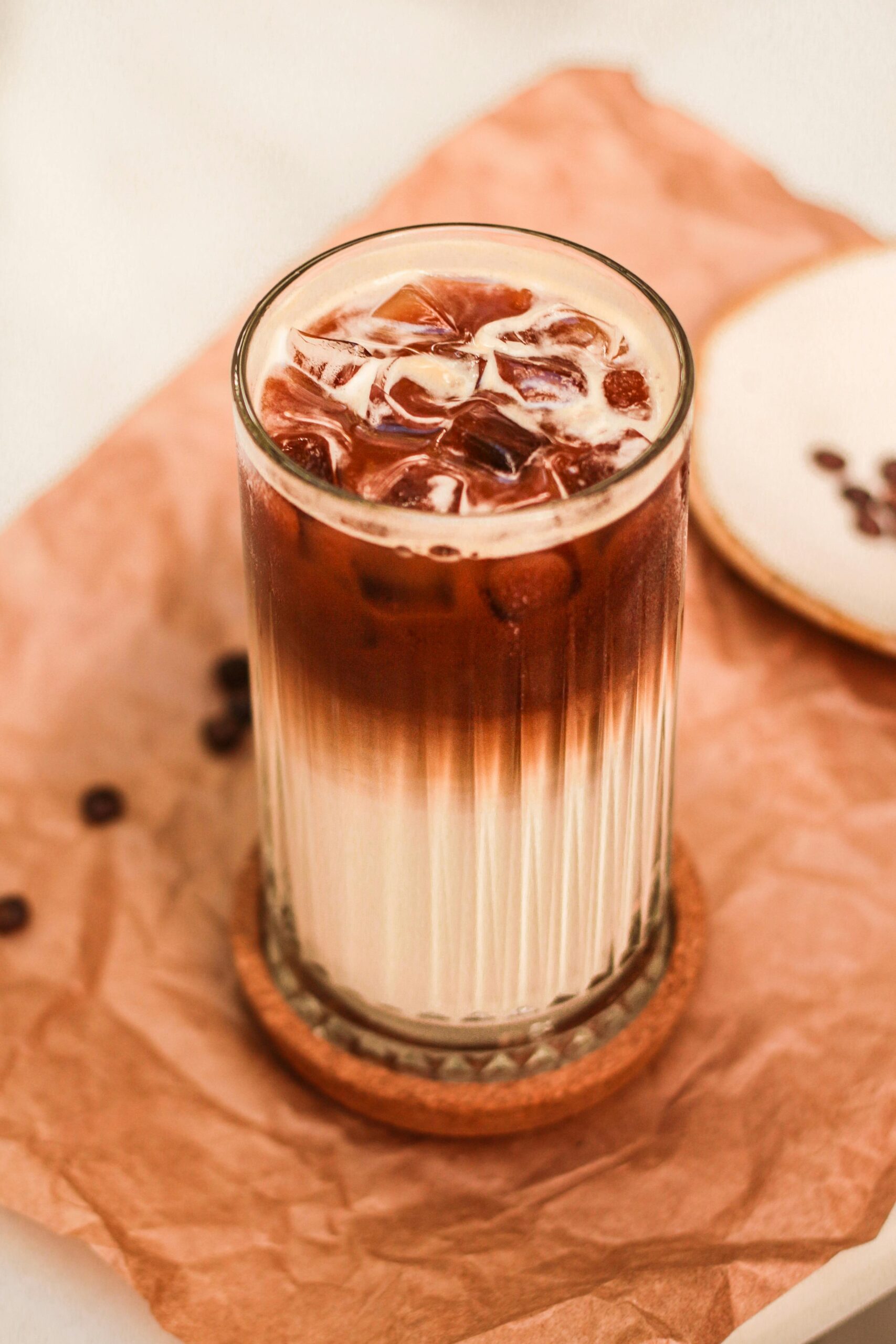When you think about ice cream, what comes to your mind? Creamy, cold, and sweet, right? But have you ever heard about the magical world of Turkish Ice Cream Culture? This is not just any ordinary dessert; it’s a fascinating experience that will change how you see ice cream forever. In this ultimate guide, we will dive deep into the unique magic of Turkish ice cream, revealing secrets that make it irresistibly chewy, stretchy, and delightfully fun. Curious about what makes Turkish dondurma so special? Keep reading to uncover the traditions, flavors, and incredible street performances that define this cultural phenomenon.
The main idea behind this article is to explore the rich history and captivating traditions that surround Turkish ice cream (known as dondurma) while guiding you on how to fully enjoy this one-of-a-kind treat. From the use of salep (a special orchid root powder) to the theatrical serving methods that ice cream vendors perform, Turkish ice cream offers an unforgettable sensory adventure. Whether you’re a food lover, a travel enthusiast, or just someone looking for a new dessert craze to try, this guide will open your eyes to the world of authentic Turkish ice cream culture. And oh, did we mention the mind-blowing tricks and playful vendor antics that make buying dondurma an experience in itself? You won’t want to miss it!
Get ready to discover the best Turkish ice cream flavors, learn about the traditional ingredients, and find out where to experience the most exciting Turkish ice cream street performances. This isn’t just a dessert; it’s a cultural celebration that’s sweeping the globe, and now it’s your turn to join the fun!
7 Fascinating Facts About Turkish Ice Cream You Never Knew
Turkish ice cream is not just a dessert, it’s a whole experience that many travelers find unforgettable when visiting Turkey. You might think ice cream is just cold and sweet treat, but Turkish ice cream, also called “dondurma,” holds a special place in Turkey’s culture and traditions. It has unique texture, flavor, and even a story behind it that many people don’t knew before. If you are curious about this fascinating frozen delight, read on to discover 7 fascinating facts about Turkish ice cream you never knew, and get ready to dive into a guide to Turkish ice cream culture that shows its unique magic.
7 Fascinating Facts About Turkish Ice Cream You Never Knew
Turkish Ice Cream Is Chewy and Stretchy
Unlike regular ice cream, Turkish dondurma has a chewy and elastic texture. This is because it’s made with two special ingredients called salep and mastic. Salep is a flour made from wild orchid tubers, which helps the ice cream become thick and stretchy. Mastic, a resin from a tree, adds a slight chewiness and unique aroma.Its History Dates Back Centuries
Turkish ice cream has roots going back to the Ottoman Empire times, around 16th century. It was considered a luxury dessert enjoyed by sultans and elites. The recipe and techniques were carefully passed down generations, keeping the tradition alive for hundreds of years.The Vendors Perform Playful Tricks
One of the most fun parts of Turkish ice cream culture is the street vendors who sell it. They often perform entertaining tricks, teasing customers by making the ice cream slip from their cones or spinning it around with long paddles before finally handing it over. This playful interaction is a must-see experience if you visit Turkey.It Melts More Slowly Than Regular Ice Cream
Because of the salep in the recipe, Turkish ice cream melts much slower than typical ice cream. This makes it perfect for hot summer days in Turkey, allowing people to enjoy it longer without worrying about it dripping everywhere.There Are Regional Variations Across Turkey
Different cities and regions have their own versions of dondurma. For instance, in the southeastern regions, the ice cream might be more dense and heavily flavored with mastic resin. While in coastal areas, lighter versions with additional fruit toppings are popular.It’s Often Served in Large Cones or Cups
Turkish ice cream is traditionally served in large cones, which sometimes are much bigger than the usual ice cream cones you see elsewhere. Vendors might also serve it in cups with toppings like crushed pistachios, coconut flakes, or fresh fruit slices.It’s Celebrated With Festivals and Events
In Turkey, ice cream is not just a snack but a part of the social culture. Cities like Kahramanmaraş hold annual ice cream festivals where vendors compete and showcase their skills. These events attract both locals and tourists eager to taste the best dondurma and witness the cultural festivities.
A Guide To Turkish Ice Cream Culture: Discover Its Unique Magic
Turkish ice cream culture is deeply rooted in the everyday life and social fabric of Turkey. To truly appreciate dondurma, you have to understand not only the taste but also the traditions and rituals that surround it.
The Role of Ice Cream Vendors
Ice cream sellers, known as “dondurmacı,” are often street performers. They don’t just sell ice cream, but create a lively atmosphere with their tricks and jokes. Watching a dondurmacı in action is like watching a small theater performance. It’s common to see them spinning the ice cream on long metal rods, flipping it around, or offering it to customers then pulling it away playfully.How to Eat Turkish Ice Cream Like a Local
When you buy dondurma, you should expect some playful teasing from the vendor. Don’t be surprised if they delay giving you the ice cream by pulling the cone away or spinning it high up. The trick is to be patient and join in the fun. Once you get your ice cream, savor it slowly because of its chewy texture and rich flavor.Popular Flavors and Toppings
Traditional flavors include plain salep, chocolate, and mastic. But modern shops also offer pistachio, fruit flavors like pomegranate or cherry, and even coffee-flavored dondurma. Toppings like chopped nuts, fresh fruits, and honey are often added for extra taste.Where To Find the Best Turkish Ice Cream
If you want authentic dondurma, head to southern Turkey, especially Kahramanmaraş, the city famous for its ice cream. Istanbul and Antalya also have many street vendors and shops selling high-quality dondurma. Look for places where vendors use long paddles and perform the tricks – it’s a sign
How Turkish Ice Cream Differs From Traditional Ice Cream: A Cultural Exploration
When you think about ice cream, you probably imagine a creamy, cold dessert that melts quickly in your mouth. But Turkish ice cream, known as dondurma, is unlike any other ice cream you have ever tried. It has a unique texture, a fascinating history, and a cultural significance that makes it very special. This article will take you on a journey to discover how Turkish ice cream differs from traditional ice cream, and why it has become a beloved treat for locals and travelers alike.
What Makes Turkish Ice Cream Different?
Turkish ice cream is made with a few unusual ingredients that you won’t typically find in regular ice cream. The main difference starts with the use of salep, a flour made from the tubers of wild orchids. This ingredient gives the ice cream a stretchy, chewy texture that is almost like taffy. The second key ingredient is mastic, a resin that adds a subtle pine or cedar flavor and helps with the elasticity.
Traditional ice cream is usually made with cream, sugar, and flavorings, and it relies on freezing and churning to achieve smoothness. Turkish ice cream, however, needs constant kneading and pulling during the serving process to maintain its unique consistency. This makes it thicker and less likely to melt quickly even in hot weather.
A Little History About Dondurma
The origins of Turkish ice cream can be traced back to the Ottoman Empire, centuries ago. It was first created in the eastern regions of Turkey, particularly in the city of Kahramanmaraş, which is famous for its dondurma today. The use of salep originally came from the need to make ice cream thicker and more resistant to melting in the hot climate.
The street vendors, known as dondurmacı, often perform playful tricks while serving the ice cream, twisting the cones and teasing customers with the stretchy dessert. This theatrical serving style has become a cultural tradition and a big part of the Turkish ice cream experience.
Key Differences Between Turkish and Traditional Ice Cream
| Feature | Turkish Ice Cream (Dondurma) | Traditional Ice Cream |
|---|---|---|
| Main Thickening Agent | Salep (orchid root flour) and mastic resin | Eggs, gelatin, or stabilizers |
| Texture | Chewy, stretchy, thick | Creamy, smooth, melts quickly |
| Serving Style | Hand-kneaded and pulled, often with street performance | Scooped and served in bowls or cones |
| Melting Rate | Slow melting | Fast melting |
| Flavor Profile | Subtle floral and pine hints due to mastic | Wide variety, often sweet or fruity |
| Popular Regions | Kahramanmaraş and Eastern Turkey | Worldwide, varies by country |
Why Turkish Ice Cream Is More Than Just a Dessert
Dondurma is not only about taste but also about culture and tradition. The way it is made and served connects people to a long history and regional pride. Eating Turkish ice cream is often an experience filled with laughter and interaction as vendors perform their tricks. This makes it especially popular at festivals, markets, and tourist spots.
If you visit Turkey, trying dondurma is a must. You will notice how the vendors use long metal paddles to stretch and flip the ice cream in front of you. Sometimes, they will pretend to give you the cone and quickly pull it away, making it a fun challenge to catch your treat.
Exploring Turkish Ice Cream Culture: Tips for Travelers
- Look for vendors in cities like Istanbul, Ankara, and especially Kahramanmaraş, the hometown of dondurma.
- Try different flavors; while vanilla and chocolate exist, unique tastes like rose, pistachio, and mastic are common.
- Don’t be shy to enjoy the playful serving rituals, it’s part of the enjoyment.
- Be patient, the ice cream takes time to be prepared and served properly.
- Remember the ice cream is chewy, so it might take longer to eat than typical ice cream.
Practical Examples of Turkish Ice Cream Experience
- At a bustling street market in Istanbul, you might find a dondurmacı entertaining a crowd with his tricks while serving rich, chewy ice cream.
- In Kahramanmaraş, the local shops use traditional recipes passed down generations, often using fresh goat milk for a richer flavor.
- During summer festivals, families gather around ice cream stalls, sharing laughter and stories while enjoying dondurma’s unique texture.
Summary of Turkish Ice Cream’s Unique Magic
- Uses natural ingredients from orchids and resin for elasticity.
- Has a chewy, almost elastic texture unlike smooth traditional ice cream.
- Served with entertaining street performances.
- Resistant to melting even in warm temperatures.
- Holds a special place in Turkish cultural identity and tradition.
Turkish ice cream is not just a sweet treat; it is a
The Secret Ingredients That Make Turkish Ice Cream Irresistibly Unique
When you think about Turkish delights, your mind might rush to the famous sweets or the rich history behind them. But there’s another star in Turkey’s culinary crown that often gets overlooked—the Turkish ice cream. This isn’t your usual scoop of vanilla or chocolate. It’s a fascinating treat that has captured hearts across the world thanks to its unique texture, flavor, and the culture surrounding it. If you haven’t tried it yet, you’re definitely missing something special. So let’s dive into the secret ingredients and the intriguing culture that makes Turkish ice cream so irresistibly unique.
The Secret Ingredients That Set Turkish Ice Cream Apart
What makes Turkish ice cream, or “Dondurma,” stand out from the crowd? The answer lies in its ingredients, which are quite different from the typical ice cream you find elsewhere.
- Salep: This is the star ingredient. Salep is a flour made from the tubers of wild orchids native to Turkey. It gives the ice cream its characteristic stretchy and chewy texture. Without salep, Turkish ice cream would lose its magic.
- Mastic: Sometimes added for extra chewiness and a slightly pine-like flavor, mastic resin is a natural gum harvested from trees on the Greek island of Chios. Its inclusion depends on the region and the recipe.
- Milk and Sugar: Like any ice cream, these are the base. But the balance in Turkish ice cream is specially crafted to compliment salep’s unique properties.
This combination creates an ice cream that’s thicker, denser, and somehow more elastic than your average frozen treat. It doesn’t melt quickly, which makes it perfect for hot Turkish summers.
A Quick Look Into History: Where Did Turkish Ice Cream Come From?
Turkish ice cream has been around for centuries, dating back to the Ottoman Empire. The earliest records suggest it was enjoyed by sultans and common folks alike. Its origins are intertwined with the use of salep, which was prized not only for culinary uses but also medicinal benefits.
Traditionally, ice cream was hand-churned in large copper vats, then served immediately. Vendors would entertain customers with playful tricks, stretching and twisting the ice cream with long paddles, almost like a performance art.
Dondurma Vs. Western Ice Cream: A Comparison
| Feature | Turkish Ice Cream (Dondurma) | Western Ice Cream |
|---|---|---|
| Key Ingredients | Salep, Mastic, Milk, Sugar | Cream, Milk, Sugar, Flavorings |
| Texture | Chewy, Elastic, Dense | Smooth, Creamy, Soft |
| Melting Rate | Slow melting due to salep and mastic | Melts quickly in warm temperatures |
| Serving Style | Often served with dramatic street performances | Usually scooped into cones or cups |
| Cultural Experience | Integral part of street food culture | Mostly a dessert or snack |
This comparison shows how Turkish ice cream isn’t just about taste but also about the experience and texture that you won’t easily find somewhere else.
Turkish Ice Cream Culture: More Than Just Dessert
In Turkey, eating ice cream is a social event and a form of entertainment, especially in cities like Istanbul and Antalya. Vendors are known for their playful ways, teasing customers with their long-handled paddles, tossing the ice cream up and down before handing it over. This act isn’t just for fun; it’s a way to show the ice cream’s elasticity and quality.
If you visit local markets or tourist spots in Turkey, you’ll notice these vendors in action. It’s common for families, friends, and tourists to gather around, laughing and trying to catch their ice cream before it’s pulled away again.
How To Enjoy Turkish Ice Cream Like a Local
- Look For Vendors with Long Paddles: They are the ones who serve authentic Dondurma. The longer paddles are used to stretch and knead the ice cream.
- Try Different Flavors: Besides the classic plain, you might find flavors like pistachio, rose, or even chocolate mixed in.
- Watch the Show: Part of the fun is watching the vendor perform their tricks. Don’t be shy to ask for a little extra stretch or twist before you eat.
- Eat It Quickly: Unlike Western ice cream which melts fast, Turkish ice cream stays firm longer. But it’s best enjoyed fresh and immediate.
Tips for Travelers: Where to Find the Best Turkish Ice Cream?
If you are planning your trip to Turkey, here are some cities known for their excellent Dondurma:
- Maraş: The birthplace of the original Dondurma, and still famous for its authentic taste and texture.
- Istanbul: The bustling metropolis offers many street vendors and specialty shops where you
Why Turkish Ice Cream Stands Out: History and Tradition Behind the Magic
Why Turkish Ice Cream Stands Out: History and Tradition Behind the Magic
If you ever been to Turkey, you probably noticed the street vendors selling ice cream in a very unusual way. Turkish ice cream, known as “dondurma,” is not like regular ice cream you get back home. It has this unique texture that is chewy and stretchy, and the vendors often perform tricks while serving it, making it a fun experience for everyone. But why exactly Turkish ice cream stands out so much? The answer lies deep in its history and tradition, which making it unlike any other frozen treat in the world.
The Roots of Turkish Ice Cream: A Historical Journey
Turkish ice cream dates back hundreds of years, with its origins traced to the Ottoman Empire period. It was originally made using only three simple ingredients: milk, sugar, and salep. Salep is a special flour ground from the tubers of wild orchids found in the mountains of Turkey. This ingredient gives dondurma its signature elasticity and resistance to melting quickly. Unlike the typical ice cream that melts fast in the heat, Turkish ice cream can last longer without turning into a puddle.
In the past, dondurma was considered a luxurious dessert, often enjoyed by the sultans and the wealthy class. It was a symbol of status and hospitality. Vendors would prepare it fresh in front of customers, which made it even more appealing. Over time, the tradition spread beyond the palace gates and became a beloved treat for the common people as well.
What Makes Turkish Ice Cream So Different?
Several factors make Turkish ice cream unique, not just its ingredients but also the way it’s made and served. Here are some key points explaining why it stands out:
- Salep: This orchid root flour is essential. It thickens the ice cream and gives it that stretchy texture.
- Mastic: A resin obtained from the mastic tree is sometimes added. It adds a distinct flavor and also contributes to the chewiness.
- Hand-churning: Unlike commercial ice creams churned by machines, dondurma is traditionally mixed by hand with big paddles, which helps develop its elasticity.
- Temperature: The ice cream is kept at a cold but not freezing temperature, allowing it to maintain its soft and chewy nature.
- Serving style: Vendors often tease customers by playfully spinning and flipping the ice cream on a long metal rod before finally handing it over.
A Guide To Turkish Ice Cream Culture: Discover Its Unique Magic
Experiencing Turkish ice cream is more than just tasting a dessert — it’s a cultural event. The vendors are entertainers, the ice cream is art, and the customers are part of the show. Here’s what you need to know if you want to dive into this fascinating culture:
Where to try it?
- Major cities like Istanbul, Ankara, and Izmir have numerous street vendors selling dondurma.
- Coastal towns in the Mediterranean and Aegean regions are also popular spots.
- Look for shops that specialize in dondurma, as they tend to use authentic recipes.
What flavors to expect?
- Traditional flavors are plain milk and mastic.
- Modern variations include chocolate, pistachio, and fruit flavors.
- However, the texture remains the main attraction, regardless of the flavor.
How to eat it?
- Be ready for a performance. Vendors will play tricks like handing the ice cream on a cone only to pull it away when you try to grab it.
- Don’t get frustrated! It’s all part of the fun and a sign of good luck.
- Take your time to enjoy the chewiness and slowly savor the flavor.
Buying tips
- Prices are usually affordable, but premium shops might charge more.
- Try to buy from vendors who use fresh salep and mastic, since some cheaper versions use substitutes.
- It’s better to eat it immediately because it is best enjoyed fresh.
Turkish Ice Cream Compared To Other Ice Creams
To understand better how dondurma is unique, let’s compare it with some popular ice cream types worldwide:
| Feature | Turkish Dondurma | American Ice Cream | Italian Gelato | Japanese Mochi Ice Cream |
|---|---|---|---|---|
| Main Ingredients | Milk, sugar, salep, mastic | Milk, cream, sugar | Milk, sugar, less cream | Ice cream wrapped in mochi |
| Texture | Chewy, stretchy | Creamy, soft | Dense, smooth | Soft outside, creamy inside |
| Melting Rate | Slow | Fast | Medium | Fast |
| Serving Style | Hand-churned, playful | Scooped | Scooped |
Top 5 Turkish Ice Cream Shops You Must Visit for an Authentic Experience
Turkish ice cream, also known as “dondurma,” is not just a frozen treat but a cultural phenomenon that captures the hearts and taste buds of those who visit Turkey. If you ever find yourself wandering the vibrant streets of Istanbul, Antalya, or any other city in Turkey, you must try this unique ice cream experience. Its chewy texture and resistance to melting make it unlike any other ice cream around the world. But what makes Turkish ice cream so special? And where you can find the best shops to taste this delight? Let’s dive into the fascinating world of Turkish ice cream culture and discover top spots you shouldn’t miss.
A Guide To Turkish Ice Cream Culture: Discover Its Unique Magic
Turkish ice cream is different from your regular scoop in many ways. The key ingredient that sets dondurma apart is “salep,” a flour made from the tubers of wild orchids. This natural thickener gives the ice cream its famous elasticity and chewiness. Another ingredient that adds to its uniqueness is mastic, a resin that adds subtle flavor and stickiness.
Historically, dondurma dates back to the Ottoman Empire. Street vendors would sell it with a theatrical performance — twisting, pulling, and teasing customers with long taffy-like strands before finally handing over the cone. This tradition still continues today, making the experience both tasty and entertaining.
Here’s what makes Turkish ice cream culture special:
- Texture: It’s thick and chewy, unlike creamy and soft Western styles.
- Performance: Vendors often perform tricks, flipping and spinning the ice cream.
- Flavor: Usually, it has a mild sweetness mixed with subtle floral notes from salep and mastic.
- Serving style: Dondurma is often eaten with a knife and fork due to its firmness.
If you want to understand Turkish ice cream culture deeply, visiting the right places is essential.
Top 5 Turkish Ice Cream Shops You Must Visit for an Authentic Experience
Whether you are in Istanbul, Cappadocia, or Izmir, these shops serve the most authentic Turkish ice cream with a side of cultural magic.
Mado (Multiple Locations)
- One of the most famous chains in Turkey.
- Offers wide range of ice cream flavors with traditional dondurma texture.
- Known for its consistent quality and family-friendly atmosphere.
- Try the classic plain dondurma or pistachio flavor for true taste.
Ali Usta Dondurma (Istanbul)
- Located near the historic Sultanahmet area.
- Family-owned for decades, known for using authentic salep and mastic.
- Vendors perform the traditional tricks that delight tourists and locals alike.
- The shop’s old-fashioned look makes the visit more nostalgic.
Saray Dondurma (Antalya)
- A local favorite near Konyaalti Beach.
- Famous for large cones and friendly vendors.
- Offers flavors like chocolate, vanilla, and the traditional salep.
- Great spot after a hot day by the sea.
Dondurmacı Yaşar Usta (Izmir)
- Renowned for its creamy yet elastic ice cream.
- Uses fresh ingredients and offers seasonal fruit flavors.
- Situated in a lively neighborhood full of cafes and shops.
- Ideal for those wanting to explore dondurma beyond Istanbul.
Kazandibi Dondurma (Cappadocia)
- Combines local Cappadocian flavors with traditional ice cream making.
- Vendors include pieces of dried fruits and nuts in some varieties.
- The backdrop of fairy chimneys make eating here unforgettable.
- A must-visit if you’re touring the magical region.
Comparing Turkish Ice Cream to Other Styles
It helps to understand how dondurma stacks up against other ice cream types around the world. Here’s a quick comparison:
| Feature | Turkish Ice Cream (Dondurma) | Italian Gelato | American Ice Cream | Japanese Mochi Ice Cream |
|---|---|---|---|---|
| Texture | Chewy and elastic | Smooth and dense | Creamy and soft | Soft rice dough shell |
| Main Thickener | Salep and mastic | Milk and sugar | Milk, cream, sugar | Mochi rice flour |
| Melting Speed | Slow | Medium | Fast | Medium |
| Serving Style | Cone or cup, sometimes with knife and fork | Cone or cup | Cone or cup | Small balls, handheld |
| Cultural Performance | Yes, vendor tricks | No | No | No |
This table clearly shows why Turkish ice cream is a unique experience, not just a dessert.
Practical Tips for Enjoying Turkish Ice Cream
How to Enjoy Turkish Ice Cream Like a Local: Tips and Tricks Revealed
When you travel to Turkey, one of the most delightful treats you can’t miss is the famous Turkish ice cream, known as “dondurma.” This isn’t your usual ice cream experience; it has a texture and taste that is unlike anything you tried before. Enjoying Turkish ice cream like a local means more than just eating it — it’s a whole culture, a playful tradition, and a delicious adventure all in one. So if you wonder how to really savor this unique dessert, here’s a guide that reveals some tips and tricks, and gives you a glimpse into the magic behind Turkish ice cream culture.
What Makes Turkish Ice Cream So Special?
Turkish ice cream isn’t just ice cream. It is made with two special ingredients called salep and mastic. Salep comes from the root of wild orchids, and gives the ice cream its thick, chewy texture. Mastic is a resin that adds a slight pine flavor and helps keep the ice cream elastic. Because of these ingredients, dondurma melts really slowly and stretches like a taffy candy. This makes it perfect for playful vendors to show off their tricks while serving you.
Historically, Turkish ice cream has been enjoyed for centuries, dating back to the Ottoman Empire. It was originally sold in street markets and became popular for its unique consistency and long-lasting coldness. Even today, many shops still use traditional methods and recipes passed down through generations.
How To Enjoy Turkish Ice Cream Like a Local: Tips and Tricks
Eating Turkish ice cream is not just eating. It is a fun, interactive moment. Here what you should do:
- Watch the vendor’s performance. In many tourist areas, the sellers do funny tricks like pretending to hand you the cone then pulling it back, or twisting the ice cream on the cone like a magician. Don’t get frustrated; it’s part of the fun.
- Ask for a sample before buying. Many vendors will let you taste a bit to decide which flavor you want. The most popular flavors are vanilla, chocolate, pistachio, and rose.
- Try the smaller cones first. Turkish ice cream is rich and heavy, so a small portion is enough for beginners.
- Eat it slowly. Because it melts slowly and is chewy, savoring each bite is a must. You won’t find other ice creams that last this long under the hot sun.
- Join locals at a dondurma shop. Instead of just buying from street vendors, find a traditional ice cream parlor where you can sit and enjoy the atmosphere.
Discovering The Unique Magic of Turkish Ice Cream Culture
Turkish ice cream culture is not only about the taste but also about the experience. Here some interesting facts:
- Street performance: Many vendors use long paddles to stretch and spin the ice cream. This is called “maraş dondurması,” named after the city Maraş, famous for its ice cream.
- Seasonal tradition: Though dondurma is enjoyed year-round, the peak season is during the hot summer months when people gather around to cool down.
- Social gathering: In Turkey, ice cream shops are common meeting spots for families and friends. It’s more than dessert; it’s a social ritual.
- Local pride: Each region in Turkey may have its own twist on the recipe, especially with the types of nuts or flavors added.
- Health aspect: Salep is believed to have health benefits, like soothing sore throats and improving digestion, adding to the appeal beyond just flavor.
Comparing Turkish Ice Cream To Other Types
To understand dondurma better, it helps to compare it with other ice creams you might know:
| Feature | Turkish Ice Cream (Dondurma) | Regular Ice Cream | Gelato |
|---|---|---|---|
| Texture | Thick, chewy, stretchy | Creamy, melts quickly | Dense but soft |
| Key Ingredients | Salep, mastic, milk, sugar | Milk, cream, sugar | Milk, cream, less sugar |
| Melting Speed | Slow | Fast | Moderate |
| Serving Style | Often with street performance | Simple cones or cups | Cups or cones |
| Traditional Origin | Turkey (Maraş region) | Worldwide | Italy |
This table shows why Turkish ice cream is a unique experience. Its chewiness and slow melting make it stand out, plus the entertaining way it served.
Practical Examples: Where To Try Turkish Ice Cream
If you want to find the best dondurma during your visit, here some places to check out:
- Istanbul’s Sultanahmet Square: Many street vendors and local shops offer authentic Turkish ice cream. It’s a popular spot for tourists and locals alike.
- Maraş City: Known as the
The Role of Salep in Turkish Ice Cream: What Makes It So Special?
Turkish ice cream is not just any ordinary frozen treat you might find in shops around the world. It has a unique texture, taste, and even story behind it that make it stand out. But what really makes Turkish ice cream, or “dondurma,” so special? The secret ingredient is something called salep, which plays a crucial role in giving this ice cream its magic. If you ever travel to Turkey, you should definitely try it and discover the culture surrounding this special dessert.
What is Salep and Why It’s Important?
Salep is a flour made from the tubers of wild orchids, mainly from the genus Orchis. These tubers are dried and ground to create this powdery substance. It’s not just an ingredient but a traditional element that has been used in Turkish desserts for centuries. Salep has the properties to thicken and stabilize the ice cream, making it chewy and stretchy unlike any other ice cream you tasted before.
In many countries, ice cream melts fast and is creamy or icy, but Turkish ice cream stays firm and elastic. This is because salep contains a substance called glucomannan, a natural thickener and stabilizer. This makes dondurma almost like a soft, cold gum. Vendors often show off this elasticity by stretching and twirling the ice cream on a cone, which is a fun spectacle to watch.
Historical Context of Turkish Ice Cream and Salep
Turkish ice cream has long roots dating back to the Ottoman Empire. The use of salep in desserts goes back hundreds of years, originally used in hot drinks and puddings. Ice cream makers in Turkey adopted salep to create a frozen treat that could withstand the warm Mediterranean climate better than regular ice cream.
In the past, salep was a luxury item because it required harvesting wild orchids, which is a delicate process. Today, due to environmental concerns and regulations, harvesting wild orchids is restricted, so real salep is rare and often replaced with artificial substitutes in commercial products. That said, traditional ice cream shops in Turkey still try to use authentic salep, maintaining the cultural heritage and taste.
How Turkish Ice Cream is Different From Others
If you compare Turkish ice cream with Italian gelato or American ice cream, you’ll see several differences:
- Texture: Turkish ice cream is denser and more elastic because of salep.
- Serving style: Vendors use long-handled paddles to stretch and scoop the ice cream.
- Melting point: It melts slower than regular ice cream.
- Flavor: Usually less sweet, focusing on rich milk and salep flavors.
- Experience: Street vendors often perform tricks, making the buying process entertaining.
The Cultural Significance of Turkish Ice Cream
Dondurma is not just dessert; it’s part of Turkish social life and street culture. Vendors called “maraş dondurmacı” (named after the city Kahramanmaraş, famous for its ice cream) often attract crowds with their playful serving techniques. They tease customers by pretending to hand over the ice cream but pulling it away with their long scoops, which becomes a part of the fun.
Eating dondurma is more than just tasting something sweet; it’s about enjoying an experience, watching the vendor’s skill, and sometimes waiting in lines at popular shops. Turkish ice cream is also served at festivals and celebrations, making it a symbol of joy and community.
Practical Guide to Trying Turkish Ice Cream
If you travel to Turkey and want to taste authentic dondurma, here are some tips to keep in mind:
- Look for shops advertising “Maraş dondurma.” This is usually a sign of traditional ice cream with salep.
- Try classic flavors first: Plain milk, mastic (a pine resin flavor), or pistachio.
- Watch the vendor’s performance: Part of the experience is the show.
- Don’t expect it to be very sweet: Turkish ice cream usually is more subtle in sweetness.
- Be patient: Because of the elasticity, scooping takes longer.
- Avoid places that look very commercial: They might use artificial stabilizers instead of real salep.
Comparing Salep Ice Cream with Other Thickening Methods
Here’s a simple table to show how salep compares with other common ice cream thickeners:
| Thickener | Origin | Effect on Ice Cream | Common Use |
|---|---|---|---|
| Salep | Wild orchid tubers | Elastic, chewy texture | Traditional Turkish ice cream |
| Guar gum | Guar plant seeds | Thickens, smooth texture | Commercial ice cream worldwide |
| Agar-agar | Seaweed | Gel-like, firm texture | Vegan ice creams and desserts |
| Corn starch | Corn kernels | Thickens, creamy texture | Homemade ice creams |
From Street Vendors to Festivals: Exploring Turkish Ice Cream Culture Today
From Street Vendors to Festivals: Exploring Turkish Ice Cream Culture Today
When you think about ice cream, probably you imagine creamy cones or colorful tubs from typical shops. But Turkish ice cream, known as dondurma, is something else entirely. It has a magic that fascinates locals and tourists alike, mixing tradition, fun, and flavor in a way you won’t find anywhere else. Turkish ice cream culture today is vibrant and full of surprises, from street vendors pulling tricks to big festivals celebrating this sweet treat.
What Makes Turkish Ice Cream So Special?
Unlike regular ice cream, dondurma is made with two unique ingredients: salep and mastic. Salep is a flour made from wild orchid tubers, which gives the ice cream its chewy texture. Mastic is a resin that adds elasticity and a subtle pine-like flavor. This combination makes Turkish ice cream stretchier and denser than the soft and creamy types you’re used to. It almost looks like taffy or chewing gum, which is why street vendors can do their famous tricks.
Historically, dondurma has been enjoyed in Turkey for centuries. It is believed to date back to the Ottoman Empire, where it was prized for its texture and long-lasting coldness. The use of salep was also important because it helped the ice cream resist melting quickly in the hot Turkish summers. Now, this tradition is kept alive in cities like Istanbul, Antalya, and especially in the southern region of Kahramanmaraş, famous for producing the best salep.
From Street Vendors to Festivals: The Experience of Turkish Ice Cream
One of the most entertaining parts about Turkish ice cream culture is watching street vendors perform their playful tricks. They don’t just hand you the ice cream; instead, they tease you with it. Sometimes they spin the cone, pull it away just before you grab it, or stretch the dondurma so it seems to never end. It’s a form of performance art that brings laughter and joy, making the experience unforgettable.
If you want to try this yourself, here’s what you might expect:
- The vendor uses a long-handled paddle to scoop and stretch the ice cream.
- They may serve it using a metal spatula, which they wave around before handing the cone.
- Customers often become part of the show, trying to catch the ice cream at the right moment.
- This interaction usually ends with a big smile and a tasty treat.
Besides street vending, Turkey has many ice cream festivals celebrating dondurma. One of the most famous is the Kahramanmaraş Ice Cream Festival held every year. It attracts local producers, tourists, and ice cream lovers who enjoy tasting different flavors and watching live demonstrations. The festival also includes contests, music, and cultural events that showcase Turkey’s rich heritage.
Turkish Ice Cream Flavors and Serving Styles
While the traditional flavor remains plain or lightly sweetened, there are many variations you can find today. Vendors and shops experiment with:
- Pistachio
- Chocolate
- Rose
- Mastic (for extra chewiness)
- Fruit flavors like pomegranate or cherry
Dondurma is mostly served in cones but sometimes you find it in cups or plates, especially in restaurants. In some places, it is paired with baklava or Turkish coffee to create a full dessert experience.
How Turkish Ice Cream Differs from Other Types
To understand dondurma better, we can compare it with other famous ice creams around the world:
| Feature | Turkish Ice Cream (Dondurma) | Italian Gelato | American Ice Cream |
|---|---|---|---|
| Texture | Chewy, stretchy | Smooth, dense | Creamy, fluffy |
| Key Ingredients | Salep, mastic, milk, sugar | Milk, sugar, natural flavors | Milk, cream, sugar |
| Melting Speed | Slow | Moderate | Fast |
| Serving Style | Often with performance tricks | In cups or cones | Usually in cones or tubs |
| Cultural Associations | Street vendors, festivals | Artisanal shops | Mass produced, fast food |
This table helps you see why dondurma is not just food but part of a cultural experience.
Tips for Travelers: Where to Find and How to Enjoy Turkish Ice Cream
If you visiting Turkey and want to dive into the ice cream culture, here are some practical tips:
- Seek out street vendors in tourist areas like Sultanahmet in Istanbul or the old town of Antalya.
- Don’t be shy to join the playful interaction; it’s part of the fun.
- Visit Kahramanmaraş if you want authentic dondurma made with local salep.
- Check local events calendars for ice cream festivals or food fairs.
- Try different flavors and notice how the texture changes with each one.
- Remember that salep is
Can Turkish Ice Cream Be Made at Home? Easy Recipes and Insider Tips
Turkish ice cream is something special that you may have seen vendors stretching it on the streets of Istanbul or Antalya. This ice cream, known as “Dondurma,” is famous for its chewy texture and resistance to melting quickly. Many people wonder, can Turkish ice cream be made at home? And if yes, how hard or easy is it? Also, there is so much rich history and culture behind this treat, that knowing about that adds more flavor to every bite. So, let’s dive into the unique magic of Turkish ice cream culture and explore some easy recipes and insider tips to making it in your own kitchen.
What Makes Turkish Ice Cream So Unique?
Unlike the typical ice creams we get in most countries, Turkish ice cream uses two very special ingredients: salep and mastic. Salep is a flour made from the tubers of wild orchids, and it gives the ice cream its thick, stretchy texture. Mastic is a resin from the mastic tree and adds a subtle pine or cedar flavor. These two ingredients combined create an ice cream that is chewy and elastic, almost like a frozen dessert you can pull and stretch.
Historically, Turkish ice cream dates back to the Ottoman Empire where vendors would sell it in the markets, amusing crowds by pulling and twisting the ice cream with long paddles. This tradition continues today, especially in tourist areas, where street vendors perform playful tricks using long-handled paddles and metal rods. It’s not just a dessert, it’s an experience.
Can Turkish Ice Cream Be Made at Home?
Well, yes and no. The key ingredient, salep, is not easy to find outside Turkey and some neighboring countries. Because it comes from a wild orchid, it is heavily regulated and sometimes expensive. Without real salep, you can’t get the authentic stretchy texture. However, there are some substitutes you can try at home that mimic the thickening effect.
Here is an easy recipe outline you could try if you want to experience Turkish ice cream at home:
Ingredients:
- 4 cups whole milk
- 1 cup heavy cream
- 1 cup sugar
- 2 tablespoons cornstarch (as substitute for salep)
- 1 teaspoon mastic resin (optional, crushed into powder)
- 1 teaspoon rose water or vanilla extract (for flavor)
Instructions:
- Mix the milk, cream, and sugar in a saucepan over medium heat.
- In a separate bowl, dissolve cornstarch in a little cold milk.
- When milk mixture is warm, slowly add the cornstarch mixture, stirring constantly.
- Add crushed mastic resin if you have it. Keep stirring until the mixture thickens.
- Remove from heat and add rose water or vanilla.
- Let the mixture cool, then freeze it. Every 30 minutes, take the ice cream out and stir vigorously to mimic the texture.
This recipe won’t be exactly like the traditional Dondurma, but it gives a nice creamy and slightly chewy texture that is fun to try.
Insider Tips for Making Turkish Ice Cream at Home
- Use a hand mixer or whisk to stir the ice cream every half hour while freezing, this helps incorporate air and prevents ice crystals.
- If you can find real salep powder, even better — use about 2 tablespoons instead of cornstarch for an authentic feeling.
- Mastic resin can be hard to find, but some Middle Eastern or Mediterranean stores carry it. Crush the resin into powder before adding it.
- Don’t rush cooling or freezing process. Turkish ice cream’s unique texture comes from slow thickening and chilling.
- Experiment with flavors: pistachio, rose, or orange blossom water are popular additions in Turkey.
A Guide To Turkish Ice Cream Culture
Turkish ice cream is more than just a dessert. It’s part of a cultural heritage that connects people to history and to each other. The way vendors sell it on the streets is very interactive and playful. Here are some interesting facts:
- Vendors wear traditional costumes and use long metal paddles to stretch and pull the ice cream.
- The ice cream’s elasticity allows vendors to perform tricks, like pretending to hand you the cone then pulling it away.
- It is commonly served in cones or cups, and sometimes with a side of fresh fruit or nuts.
- Salep, the key ingredient, also used in winter drinks and desserts in Turkey.
- The city of Kahramanmaraş is known as the birthplace of traditional Turkish ice cream, sometimes called “Maraş Dondurması.”
Comparison of Turkish Ice Cream and Regular Ice Cream
| Feature | Turkish Ice Cream (Dondurma) | Regular Ice Cream |
|---|---|---|
| Texture | Thick, chewy, stretchy | Smooth, creamy, melts quickly |
| Key Ingredients | Salep, mastic, milk, sugar | Milk, |
Discover the Fun and Interactive Turkish Ice Cream Serving Rituals Explained
Discover the Fun and Interactive Turkish Ice Cream Serving Rituals Explained
When you think about ice cream, you probably imagine a simple scoop served in a cone or a cup. But in Turkey, ice cream is not just a dessert—it’s an experience. Turkish ice cream, known as “dondurma,” comes with a unique texture and an even more unique way to be served. If you ever visit Turkey, you will quickly notice vendors performing playful tricks that make buying ice cream a memorable event. This article will take you on a journey to explore Turkish ice cream culture, revealing its fascinating history, the interactive serving rituals, and why it’s so beloved by locals and tourists alike.
What Makes Turkish Ice Cream Special?
Turkish ice cream is not your everyday ice cream. Unlike regular ice cream, dondurma is chewy and sticky, thanks to its special ingredients. The main components are milk, sugar, and salep—a flour made from the tubers of wild orchids. Salep gives the ice cream its elasticity and resistance to melting quickly, which make it perfect for the interactive serving that follows.
Some other key features are:
- Elastic and chewy texture.
- Slow melting due to salep content.
- Usually served in big, thick slices rather than soft scoops.
This unique texture is what allows vendors to perform their famous tricks without the ice cream melting or falling apart easily.
The History of Turkish Ice Cream
The story of Turkish ice cream goes back several centuries, tracing back to the Ottoman Empire. Dondurma was first created as a luxury treat for the palace and wealthy citizens. The use of salep, which requires harvesting delicate orchid tubers, made it a rare and expensive delicacy. Over time, it became more accessible to the general public, especially as street vendors started selling it in cities like Istanbul, Antalya, and Gaziantep.
Interesting fact: The word “dondurma” literally means “freezing” or “to freeze” in Turkish, which shows how the name relates directly to the frozen nature of the treat. Despite being frozen, it resists melting thanks to the special recipe.
How the Interactive Serving Ritual Works
One of the most entertaining things about Turkish ice cream is the way it is served. Vendors use long-handled paddles and metal rods to scoop and stretch the dondurma. The show is a mix of skill, playfulness, and skillful teasing of customers.
Here’s how a typical serving ritual might looks like:
- The vendor takes a big chunk of dondurma with a long paddle.
- They pretend to give the customer a cone or cup but quickly pull it away.
- The ice cream might be flipped, stretched, and spun around.
- Sometimes, the vendor will twirl the ice cream on the cone, perform a small dance, or hide the ice cream under the cone and then suddenly reveal it.
- After several playful tricks, the vendor finally hands over the ice cream, often wrapped in a paper cone.
This ritual not only makes buying ice cream more fun but also showcases the vendor’s dexterity and the unique texture of dondurma. Tourists especially love watching and recording these performances.
Why This Ritual Became Popular
The interactive serving is not just for entertainment purposes. It also serves practical roles:
- Keeps the ice cream from melting too fast under the hot sun.
- Enhances customer engagement and makes the buying experience memorable.
- Differentiates Turkish ice cream vendors from other ice cream sellers worldwide.
- Encourages people to gather and socialize around the ice cream stalls.
Because of these reasons, many vendors take pride in their serving skills and often compete with each other to perform the most impressive tricks.
Comparisons with Other Ice Cream Traditions
If you compare Turkish ice cream to other famous ice cream types, you will notice several differences:
| Ice Cream Type | Texture | Ingredients | Serving Style | Unique Feature |
|---|---|---|---|---|
| Turkish Dondurma | Chewy, elastic | Milk, salep, sugar | Interactive, playful serving | Resistant to melting, vendor tricks |
| Italian Gelato | Creamy, dense | Milk, sugar, natural flavors | Usually scooped in cups/cones | Rich flavor, less air, soft texture |
| American Ice Cream | Soft, creamy | Milk, cream, sugar, stabilizers | Scooped in cones/cups | Wide variety, often with mix-ins and toppings |
| Japanese Mochi Ice Cream | Chewy outside, creamy inside | Ice cream wrapped in sweet rice dough | Individual bite-sized pieces | Unique combination of textures and flavors |
As you can see, Turkish ice cream stands out mainly because of its texture and the serving ritual, which is not commonly found elsewhere.
Tips for Enjoying Turkish Ice Cream in Turkey
When
Conclusion
In exploring the rich and vibrant culture of Turkish ice cream, we’ve uncovered much more than just a sweet treat. From its unique, chewy texture created by salep and mastic to the playful performances of street vendors, Turkish ice cream offers a sensory experience unlike any other. Its deep historical roots and regional variations highlight the cultural significance and craftsmanship behind every scoop. Whether enjoyed in bustling bazaars or serene cafes, this beloved dessert reflects Turkey’s blend of tradition and innovation. For travelers and food enthusiasts alike, indulging in authentic Turkish ice cream is more than a culinary delight—it’s an opportunity to connect with a centuries-old heritage. Next time you encounter this fascinating treat, take a moment to appreciate the artistry and culture it represents. Embrace the adventure and savor the flavors of Turkish ice cream, a truly unforgettable experience worth seeking out.





















































